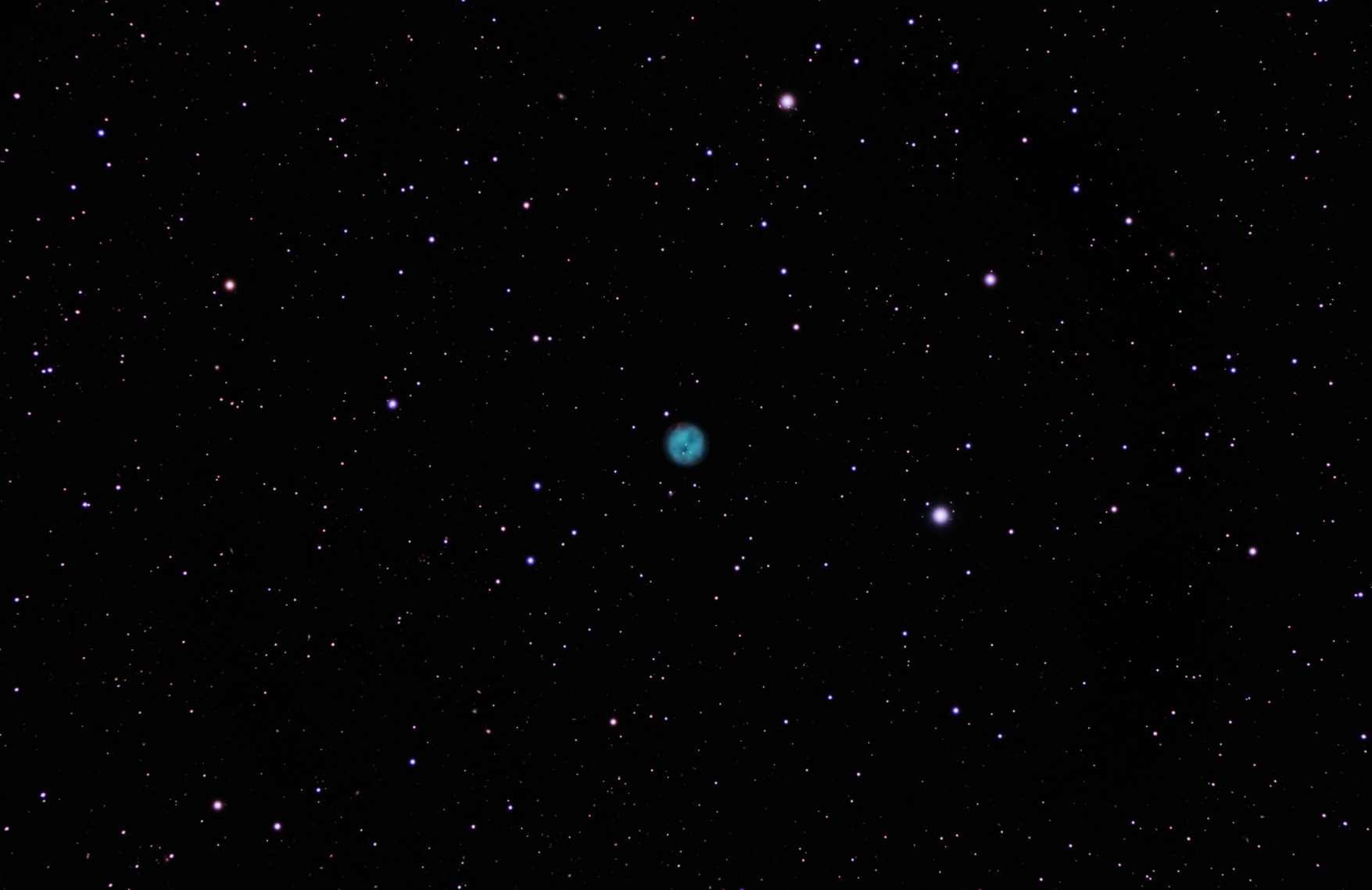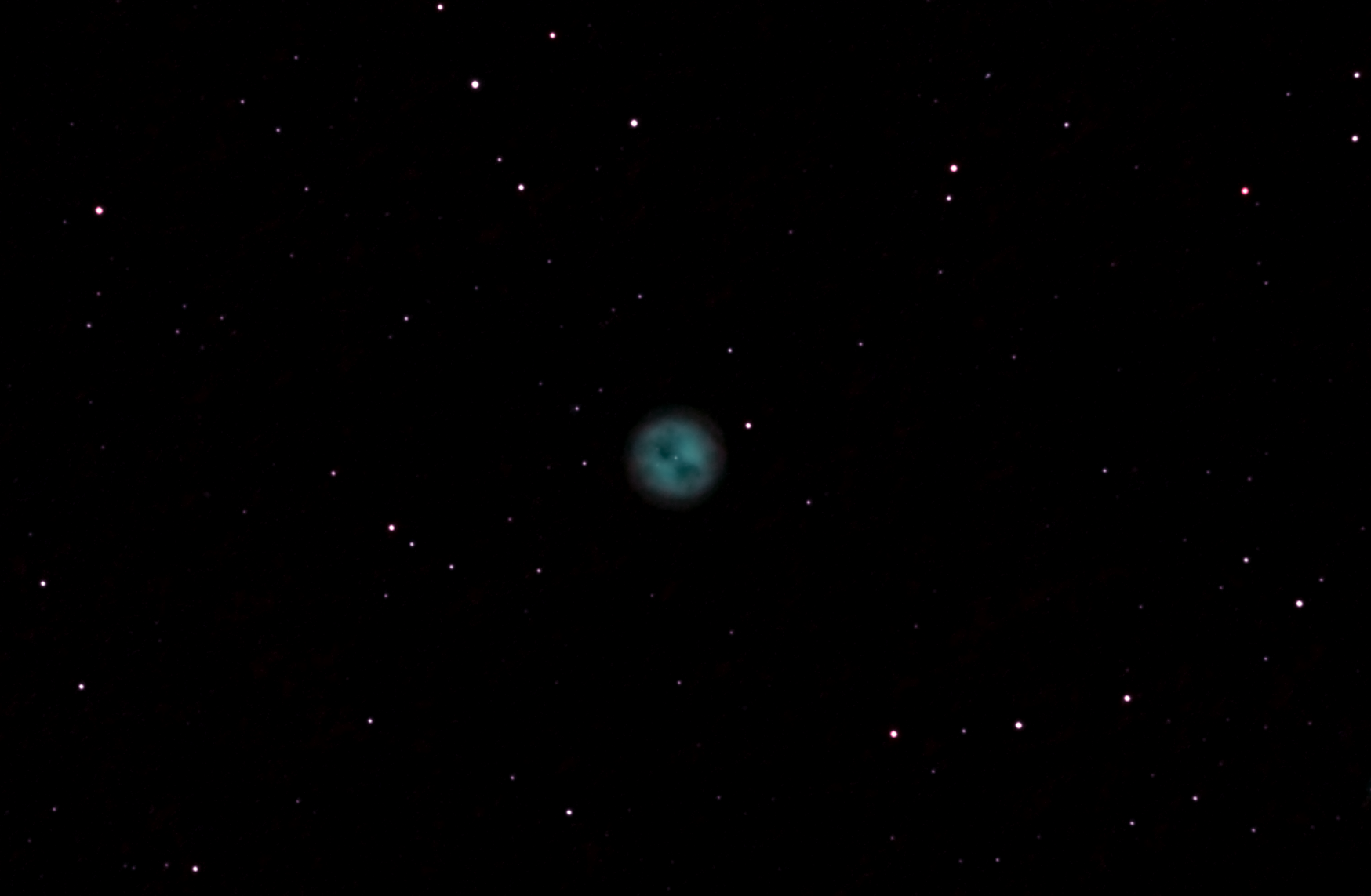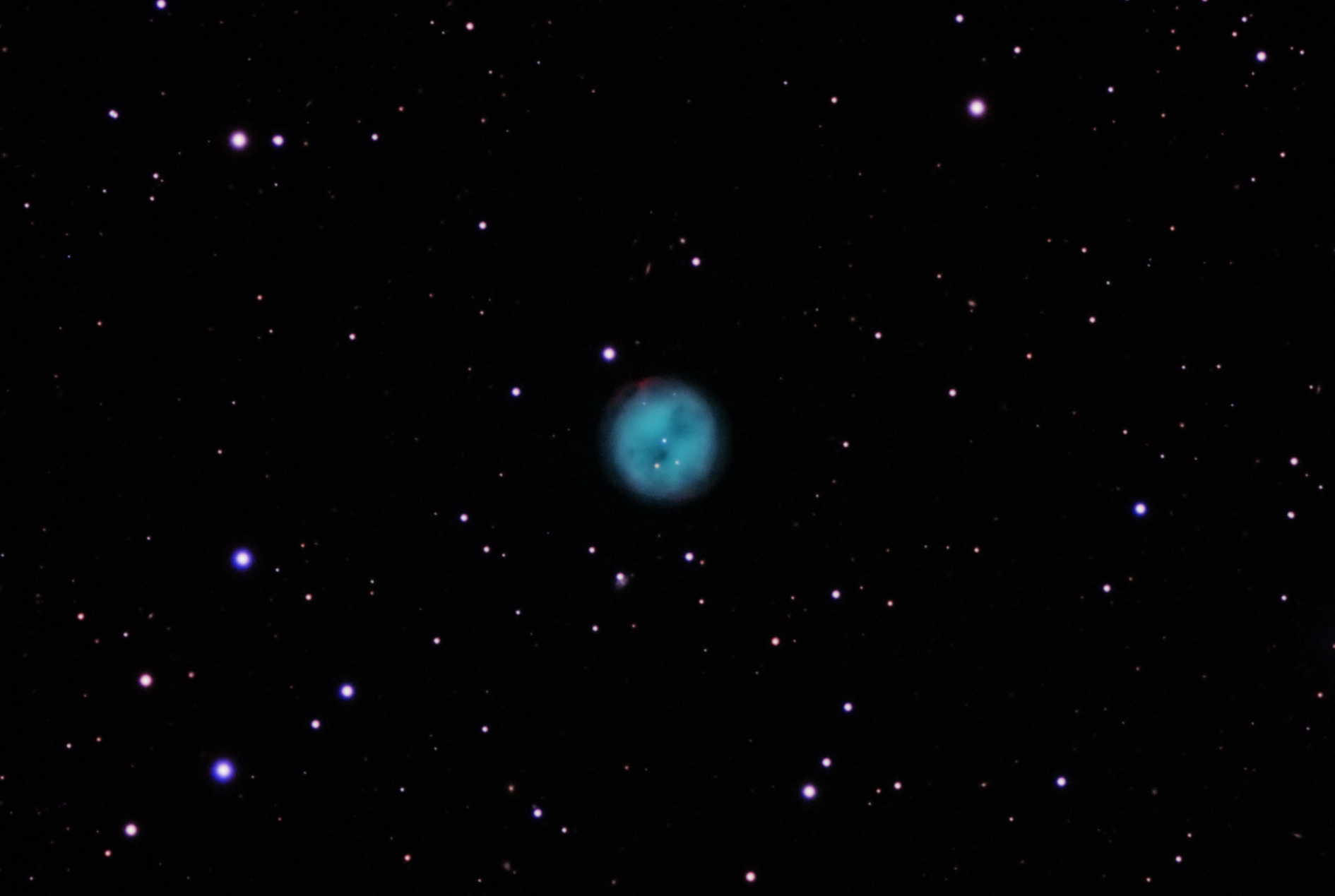Capturing the Owl Nebula has probably been one of the more difficult targets for me. Bad weather, bad luck, bad tracking and just a dozen small things that all got in between me and being able to take a good photo. My first attempt was back at the beginning of April, and I had initially chosen the target to do some testing of my light pollution filter. Unhappy with the results though I doubled-down and kept making adjustments and shooting until I was able to get something I felt okay with.
Nearly a month later, with my new camera finally replaced (and a new mount, as the tracking on my AVX has been continually degrading and it is now slated for landscape astrophotography duty and an eventual bearing upgrade to try and bring it back into better service), I was able to get 6 hours and 50 minutes worth of usable data across a couple of nights of mediocre seeing (big, fuzzy stars), and this time without any filters. I’m sure I’ll revisit this target again in the future, probably at a much higher focal length, but I’m happy enough with these results that I can move on and pick something new in the sky to focus on.

M97, Wide field
A planetary nebula 2,030 light-years away, the Owl Nebula shows multiple nearly concentric shells of gas, with an asymmetry in the inner-shell resulting in the signature double-lobed ‘owl eyes’ that give the nebula its name.

M97, First attempt
My first attempt at M97. Around 5 hours worth of image data taken using an l-enhance light pollution filter. Even with very heavy processing, I was unable to remove major walking noise that was introduced by errors in my failing AVX mount.
